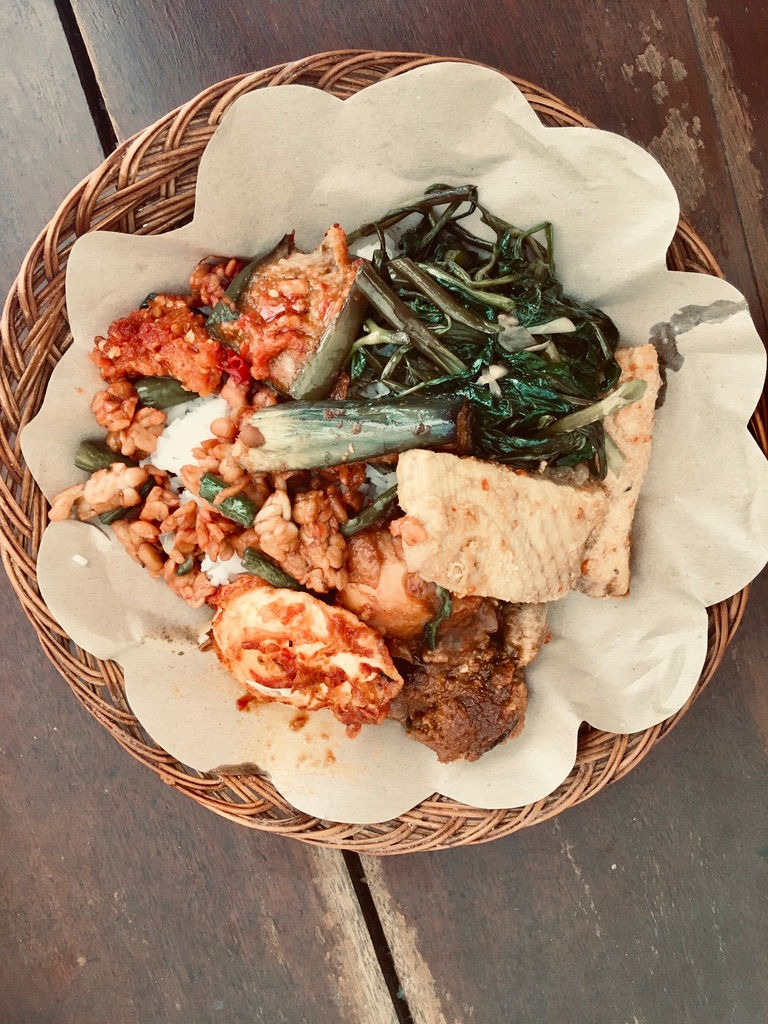The Spirits of Paradise Island - Seminyak, Bali
- Nando Adventurer
- Apr 5, 2024
- 3 min read
I’m nibbling dark vegan chocolate, trying to stitch Seminyak in words, dreaming together it’s narrow, ribboned streets, crisscrossed by cobbled lanes and plotted with secret gardens.
There are playful spirits here that peek out shyly from overgrown nooks and behind palm fronds, tempting you to follow. Bali is known as Paradise Island. When we go looking for paradise, we expect one destination. This is not a single paradise — there are thousands of small wonderlands here, each a quirky, magical, lost world in it’s own. You simply must decide what sort of paradise you’re after.
Seminyak is on the southern tip of the island of Bali. It has midnight-black shrines and stone-walled temples fringed by frangipani trees. Traditional houses with gorgeous carved doors have walled courtyards with potted plants, hanging wooden bird-cages and the bric-a-brac of daily life. There are villas and hotels with swimming pools fronted by huge traveler palms and surrounded by lush tropical gardens; green-leaved elephant ears shelter stylish cafés; colorful flowers seem to bloom everywhere. Around corners and walls, run exotic creepers and vivid imaginations; and with every new utopia found, there are dreams to be dreamed and nooks to be discovered.


The Balinese are sweetly superstitious — they believe in Barong — the fuzzy lion king of the spirit world and his nemesis, Rangda — demon queen and witch-widow. I wonder why witches and widows are always evil. Maybe it’s societal pressure?
Everywhere in Bali, there are temple offerings in tiny palm-leaf plates — flowers, slices of fruit, small biscuits, (even cigarettes and pizza!). These are placed on pavements in front of shops and houses to ward off evil, and in front of shrines to welcome good spirits. It’s very easy to step in superstition here.
Past tourist shops selling mass-made t-shirts and sarongs, there are glass-fronted boutiques with airy resort-wear, pastel-shaded home-décor and distressed-wood furniture. Glamour can be earthy, natural-chic and local. If glamour were more affordable, would everyone buy into it? Or is glamour by itself an expensively unsustainable concept? There’s definitely irony in glamorous sustainability.
In winding lanes, local warung food stalls serve spicy fish nasi campur; vegan cafes serve experimental tofu omelets, pumpkin butter and dairy-free ice-creams; and sleek modern restaurants fly in imported salmon and dry-aged steaks. Local, sensitive and debauched play on menus and tastes. It makes you think about balance and extremes.
In a corner of a hotel, there’s a quiet bar that serves arak potions with Balinese ingredients — mangosteen, hibiscus, misoyi, asan krangir… It’s a delight after the overcrowded beach-club fronting it, packed with tourists and imported liquor. Next to the bar is an empty lounge — 80’s Indo(nesian) music and Japanese city-pop roll around the narrow space with equal aplomb. Quirky appeals to me. What’s so special in mass market everything?
Seminyak is cosmopolitan and open to the world. It has something for everyone. It’s charm is in it’s private enclaves behind blackened stone walls and lush greenery. It’s ironies are there too. As secret gardens go, you play hide ‘n seek with Barong and Rangda; there’s plenty of beauty, open-mindedness, good intent and good vibes — people are sweet natured, tolerant and welcoming. The modern-day idea of Rangda pops up every now and then as unfeeling consumerism , plastic waste, a less than honest tout, a traffic jam, an overpriced, be-seen venue… The price of “progress” seems to be the same throughout the world.
Walking through a sea-breezy alley shaded by tall leafy bamboo and hedges of red hibiscus, or being whisked around on scooter-taxis on starry nights with perfect tropical weather, it’s easy to ride away on a mythical lion trailing good thoughts. It’s easy also, not to notice the demons that lurk. When I leave Bali, I’m taking a tiny clone of Barong with me — a little spirit of paradise — tucked away in the backpack of my memory — to remember him and his nemesis by.








Comments